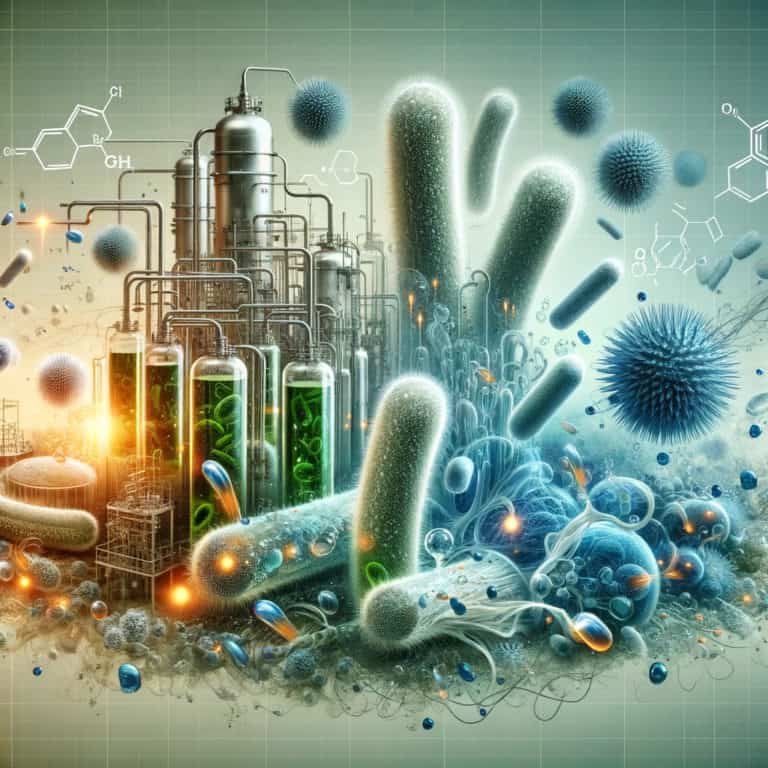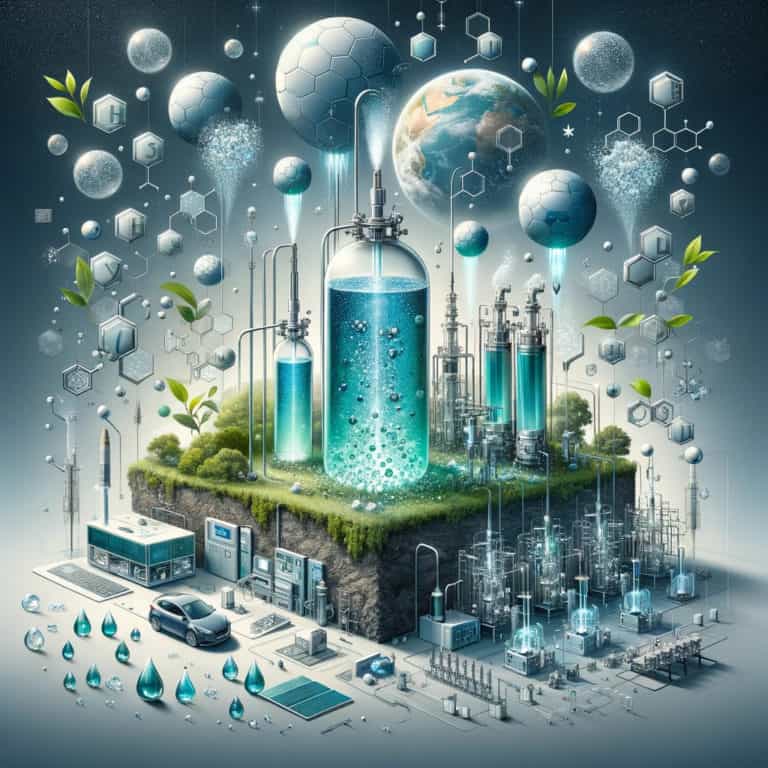Advancements in Flow Chemistry: A Review

1. Introduction to Flow Chemistry
Flow chemistry is a modern strategy that changes chemical reactions by running them constantly, as opposed to the traditional batch method. This approach has various advantages over batch chemistry, including increased safety, precise reaction control, and scalability (Sambiagio & Noël, 2020). Reactive chemicals and intermediates can be handled more safely in flow chemistry than in batch procedures because the continuous flow of materials prevents the accumulation of hazardous components within the reactor volume (Elliott et al., 2014). Flow chemistry has numerous advantages, including cost-effectiveness, safety, synthetic flexibility, process resilience, reproducibility, and scalability (Barham et al., 2018).
Flow chemistry has advanced significantly over the last two decades (Bogdan & Dombrowski, 2019). Researchers have used flow chemistry to scale up reactions such as the ring-opening reaction of potentially explosive chemicals, demonstrating the efficiency of continuous processing in managing difficult reactions (Elliott et al., 2014). Flow chemistry has also played an important role in the development of visible-light photoredox catalysis, demonstrating the benefits of flow systems over traditional batch approaches (Garlets et al., 2014).
Flow chemistry has numerous applications in the pharmaceutical sector, including drug production and photoredox reaction optimization for continuous-flow systems (González-Esguevillas et al., 2021; Vieira et al., 2020). The continuous nature of flow chemistry enables rapid material synthesis, which is especially useful in early preclinical periods where swift material synthesis is critical (Lehmann et al., 2022). Furthermore, flow chemistry adheres to regulatory norms, ensuring consistent product quality and simplifying access to bigger product quantities through the numbering of flow reactors (Schober et al.,2022).
The environmental benefits of flow chemistry have also been highlighted, particularly in pharmaceutical production, where flow techniques have been found to improve sustainability (Baumann et al., 2021). Continuous-flow reactions include advantages such as precise control over reaction parameters, low risk of handling toxic compounds, and ease of scaling up synthesis, making them preferable to batch reactions (Sugisawa et al. 2020). The conversion of batch reactions to continuous flow systems is seen as a significant step in the development of many chemical processes, highlighting the significance of flow chemistry in modern synthesis methods (Quertenmont et al., 2021).
Flow chemistry represents a paradigm shift in chemical synthesis, providing a safer, more regulated, and scalable technique than previous batch procedures. Its importance in corporate and academic research is demonstrated by its numerous applications, which range from pharmaceutical synthesis to green chemistry initiatives. Flow chemistry’s continuous nature not only improves reaction efficiency but also coincides with modern environmental ideals, making it a useful tool in the field.
2. Technological Advancements in Flow Chemistry
Recent advances in flow chemistry have been characterized by new flow reactor designs, such as microreactors and mesoreactors, which have transformed the field by allowing for exact control and optimization of reaction conditions. Automation and real-time monitoring have significantly enhanced the efficiency of flow chemical operations, resulting in higher yields and reproducibility (Morin et al., 2021). The combination of flow chemistry with other technologies such as photochemistry and electrochemistry has increased the range of applications and capabilities of flow reactors (Donnelly & Baumann, 2021).
Flow chemistry has made considerable advances in reactor design, with the creation of novel platforms such as laser-driven flow reactors that allow for the scaling of photochemical reactions utilizing visible light (Harper et al., 2019). These advances have enabled unprecedented rates of reaction in continuous flow systems, demonstrating the possibility for high-throughput production (Harper et al., 2019). Furthermore, the use of flow reactors in inorganic-organic hybrid particle production has proved their adaptability and usefulness in a variety of industries, including pharmaceuticals and biotechnology (Shiba and Ogawa, 2018).
Furthermore, the integration of flow chemistry with solar reactors for CO2 splitting, as well as the utilization of novel reactor designs for continuous fuel generation, demonstrate flow chemistry’s potential in sustainable energy applications (Hathaway et al., 2016). The scalability of photochemical reactions in continuous flow mode has been greatly improved by the development of energy-efficient LED lamps and novel reactor designs, resulting in higher productivity and practicality.
Furthermore, the use of continuous-flow reactors for aerobic granular sludge cultivation, as well as the development of diverse catalyst immobilization supports in flow reactors, demonstrate flow chemistry’s versatility and adaptability in a variety of fields, including environmental engineering and materials science (Yan et al., 2021; Lin & Qiu, 2022). The use of flow chemistry in decontamination processes using smart dielectric barrier discharge plasma and in the degradation of organic pollutants via continuous flow photocatalytic reactors demonstrates flow chemistry’s broad impact in environmental remediation (Choudhury et al., 2022; Sahoo et al., 2022).
Recent technological breakthroughs in flow chemistry have accelerated the field’s efficiency, scalability, and adaptability. The use of automation, real-time monitoring, and novel reactor designs has not only optimized reaction conditions and increased yields, but has also broadened the applications of flow chemistry to include energy production, environmental remediation, and materials synthesis.
3. Future Perspectives and Challenges
Future developments in flow chemistry are expected to provide important contributions to the field, particularly in the areas of sustainability and green chemistry. The use of continuous flow biocatalysis is expected to play an important role in the synthesis of pharmaceuticals, value-added chemicals, and materials, enabling efficient, cost-effective, and sustainable synthetic pathways (Santi et al., 2021). The importance of conforming to green chemistry criteria established by regulatory authorities such as the European Medicines Agency (EMA) and the Food and Drug Administration (FDA) emphasizes the need for environmentally friendly procedures in pharmaceutical manufacture (Santi et al., 2021).
One of the key barriers to flow chemistry adoption is scaling up, equipment costs, and the need for specialist skills (Hughes 2018). Despite tremendous scientific advances in developing flexible and reliable continuous processes, the industry continues to face challenges in applying flow technology to commercially significant situations (Baumann et al., 2020). The need for specific training and understanding in flow chemistry serves as a barrier to wider deployment, emphasizing the importance of educational programs that provide professionals with essential abilities (Hughes, 2018).
Flow chemistry has significant potential for use in pharmaceuticals, materials research, and fine chemical manufacturing. Continuous flow synthesis techniques provide a safer, more effective, and environmentally friendly alternative to drug development, allowing for the quick and cost-effective production of active pharmaceutical ingredients (APIs) (Souza et al. 2018). The capacity to do multistep continuous flow synthesis of pharmaceutical compounds addresses concerns about hazardous chemicals while also promoting sustainable medication production techniques (Bana et al., 2017). The use of flow chemistry to synthesize anticancer drugs and create pharmaceutically relevant molecules highlights the technology’s versatility and usefulness in current healthcare (Filippo & Baumann, 2021; Alfano et al., 2023).
Finally, the future of flow chemistry holds great promise for enhancing sustainable and environmentally friendly chemical synthesis methods. Overcoming scaling hurdles, equipment costs, and specialist knowledge will be crucial to realizing flow chemistry’s full potential. The application of flow chemistry to pharmaceuticals, materials science, and fine chemical production is expected to promote creativity, efficiency, and sustainability in these critical industries.
References:
Alfano, A., Pelliccia, S., Rossino, G., Chianese, O., Summa, V., Collina, S., … & Brindisi, M. (2023). Photo-flow technology for chemical rearrangements: a powerful tool to generate pharmaceutically relevant compounds. Acs Medicinal Chemistry Letters, 14(5), 672-680. https://doi.org/10.1021/acsmedchemlett.3c00072
Bana, P., Örkényi, R., Lövei, K., Lakó, Á., Túrós, G., Éles, J., … & Greiner, I. (2017). The route from problem to solution in multistep continuous flow synthesis of pharmaceutical compounds. Bioorganic & Medicinal Chemistry, 25(23), 6180-6189. https://doi.org/10.1016/j.bmc.2016.12.046
Barham, J., Koyama, E., Norikane, Y., Ohneda, N., & Yoshimura, T. (2018). Microwave flow: a perspective on reactor and microwave configurations and the emergence of tunable single‐mode heating toward large‐scale applications. The Chemical Record, 19(1), 188-203. https://doi.org/10.1002/tcr.201800104
Baumann, M., Moody, T., Smyth, M., & Wharry, S. (2020). A perspective on continuous flow chemistry in the pharmaceutical industry. Organic Process Research & Development, 24(10), 1802-1813. https://doi.org/10.1021/acs.oprd.9b00524
Baumann, M., Moody, T., Smyth, M., & Wharry, S. (2021). Evaluating the green credentials of flow chemistry towards industrial applications. Synthesis, 53(21), 3963-3976. https://doi.org/10.1055/a-1541-1761
Bogdan, A. and Dombrowski, A. (2019). Emerging trends in flow chemistry and applications to the pharmaceutical industry. Journal of Medicinal Chemistry, 62(14), 6422-6468. https://doi.org/10.1021/acs.jmedchem.8b01760
Choudhury, B., Portugal, S., Roy, S., Mastro, E., & Johnson, J. (2022). Smart dielectric barrier discharge plasma decontamination: spatially targeted decontamination with actuated ozone distribution. Frontiers in Physics, 10. https://doi.org/10.3389/fphy.2022.834030
Donnelly, K. and Baumann, M. (2021). Scalability of photochemical reactions in continuous flow mode. Journal of Flow Chemistry, 11(3), 223-241. https://doi.org/10.1007/s41981-021-00168-z
Elliott, L., Knowles, J., Koovits, P., Maskill, K., Ralph, M., Lejeune, G., … & Booker‐Milburn, K. (2014). Batch versus flow photochemistry: a revealing comparison of yield and productivity. Chemistry – A European Journal, 20(46), 15226-15232. https://doi.org/10.1002/chem.201404347
Filippo, M. and Baumann, M. (2021). Continuous flow synthesis of anticancer drugs. Molecules, 26(22), 6992. https://doi.org/10.3390/molecules26226992
Garlets, Z., Nguyen, J., & Stephenson, C. (2014). The development of visible‐light photoredox catalysis in flow. Israel Journal of Chemistry, 54(4), 351-360. https://doi.org/10.1002/ijch.201300136
González‐Esguevillas, M., Fernández, D., Rincón, J., Barberis, M., Frutos, Ó., Mateos, C., … & MacMillan, D. (2021). Rapid optimization of photoredox reactions for continuous-flow systems using microscale batch technology. Acs Central Science, 7(7), 1126-1134. https://doi.org/10.1021/acscentsci.1c00303
Harper, K., Moschetta, E., Bordawekar, S., & Wittenberger, S. (2019). A laser driven flow chemistry platform for scaling photochemical reactions with visible light. Acs Central Science, 5(1), 109-115. https://doi.org/10.1021/acscentsci.8b00728
Hathaway, B., Chandran, R., Gladen, A., Chase, T., & Davidson, J. (2016). Demonstration of a solar reactor for carbon dioxide splitting via the isothermal ceria redox cycle and practical implications. Energy & Fuels, 30(8), 6654-6661. https://doi.org/10.1021/acs.energyfuels.6b01265
Hughes, D. (2018). Applications of flow chemistry in drug development: highlights of recent patent literature. Organic Process Research & Development, 22(1), 13-20. https://doi.org/10.1021/acs.oprd.7b00363
Lehmann, H., Ruppen, T., & Knoepfel, T. (2022). Scale-up of diazonium salts and azides in a three-step continuous flow sequence. Organic Process Research & Development, 26(4), 1308-1317. https://doi.org/10.1021/acs.oprd.2c00016
Lin, G. and Qiu, H. (2022). Diverse supports for immobilization of catalysts in continuous flow reactors. Chemistry – A European Journal, 28(39). https://doi.org/10.1002/chem.202200069
Morin, M., Zhang, W., Mallik, D., & Organ, M. (2021). Sampling and analysis in flow: the keys to smarter, more controllable, and sustainable fine‐chemical manufacturing. Angewandte Chemie, 133(38), 20774-20794. https://doi.org/10.1002/ange.202102009
Quertenmont, M., Toussaint, F., Defrance, T., Lam, K., Markó, I., & Riant, O. (2021). Continuous flow electrochemical oxidative cyclization and successive functionalization of 2-pyrrolidinones. Organic Process Research & Development, 25(12), 2631-2638. https://doi.org/10.1021/acs.oprd.1c00188
Sahoo, C., Panda, B., & Gupta, A. (2022). Design aspects of a continuous flow photocatalytic reactor and its application to degrade methylene blue and textile wastewater. Chemistryselect, 7(38). https://doi.org/10.1002/slct.202201179
Sambiagio, C. and Noël, T. (2020). Flow photochemistry: shine some light on those tubes!. Trends in Chemistry, 2(2), 92-106. https://doi.org/10.1016/j.trechm.2019.09.003
Santi, M., Sancineto, L., Nascimento, V., Azeredo, J., Orozco, E., Andrade, L., … & Santi, C. (2021). Flow biocatalysis: a challenging alternative for the synthesis of apis and natural compounds. International Journal of Molecular Sciences, 22(3), 990. https://doi.org/10.3390/ijms22030990
Schober, L., Tonin, F., Hanefeld, U., & Gröger, H. (2022). Combination of asymmetric organo‐ and biocatalysis in flow processes and comparison with their analogous batch syntheses. European Journal of Organic Chemistry, 2022(7). https://doi.org/10.1002/ejoc.202101035
Shiba, K. and Ogawa, M. (2018). Precise synthesis of well‐defined inorganic‐organic hybrid particles. The Chemical Record, 18(7-8), 950-968. https://doi.org/10.1002/tcr.201700077
Souza, J., Galaverna, R., Souza, A., Brocksom, T., Pastre, J., Souza, R., … & Oliveira, K. (2018). Impact of continuous flow chemistry in the synthesis of natural products and active pharmaceutical ingredients. Anais Da Academia Brasileira De Ciências, 90(1 suppl 2), 1131-1174. https://doi.org/10.1590/0001-3765201820170778
Sugisawa, N., Nakamura, H., & Fuse, S. (2020). Recent advances in continuous-flow reactions using metal-free homogeneous catalysts. Catalysts, 10(11), 1321. https://doi.org/10.3390/catal10111321
Vieira, T., Stevens, A., Chtchemelinine, A., Gao, D., Badalov, P., & Heumann, L. (2020). Development of a large-scale cyanation process using continuous flow chemistry en route to the synthesis of remdesivir. Organic Process Research & Development, 24(10), 2113-2121. https://doi.org/10.1021/acs.oprd.0c00172
Yan, J., Cui, Y., & Huang, J. (2021). Continuous flow reactors for cultivating aerobic granular sludge: configuration innovation, principle and research prospect. Journal of Chemical Technology & Biotechnology, 96(10), 2721-2734. https://doi.org/10.1002/jctb.6791



